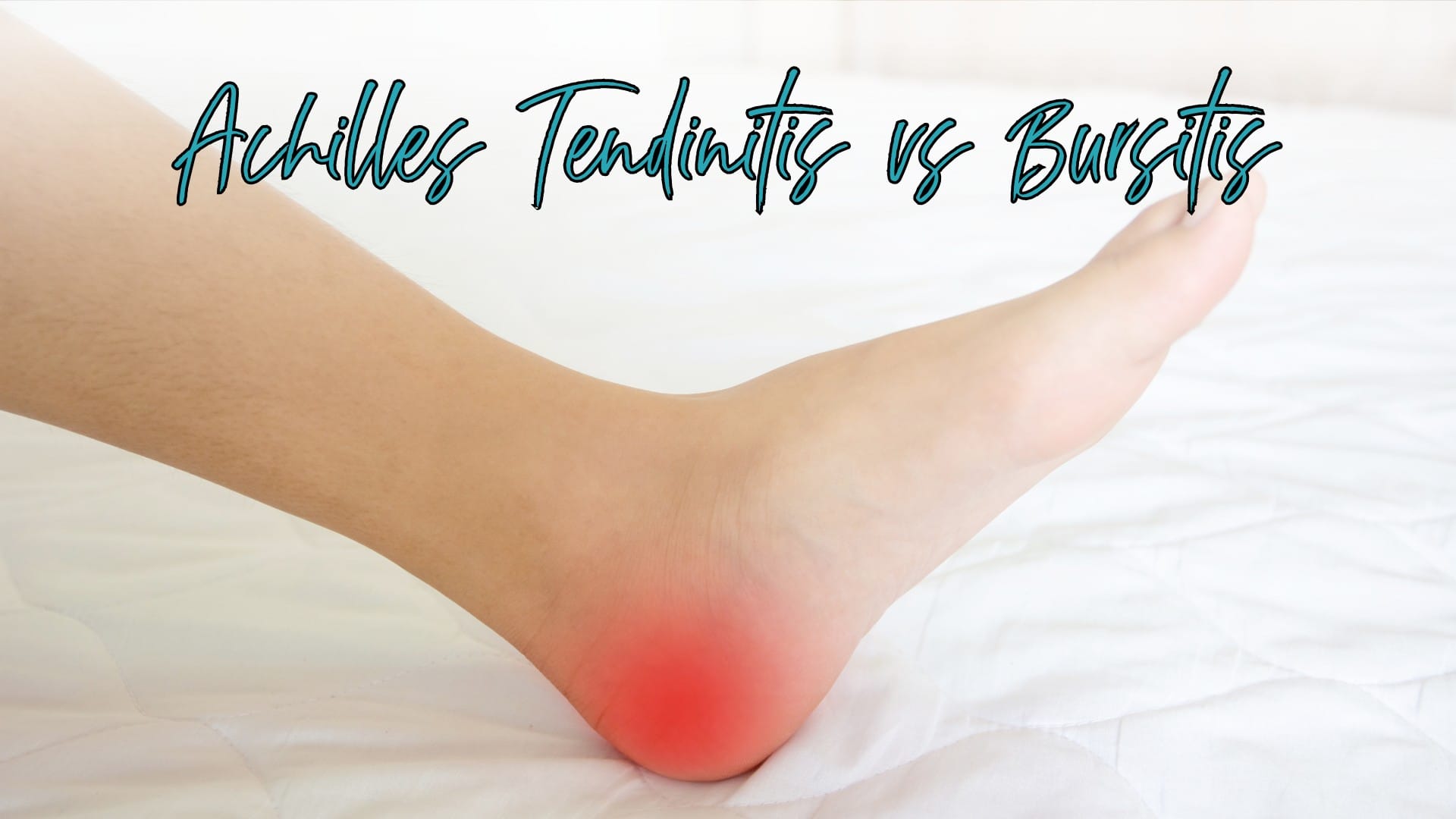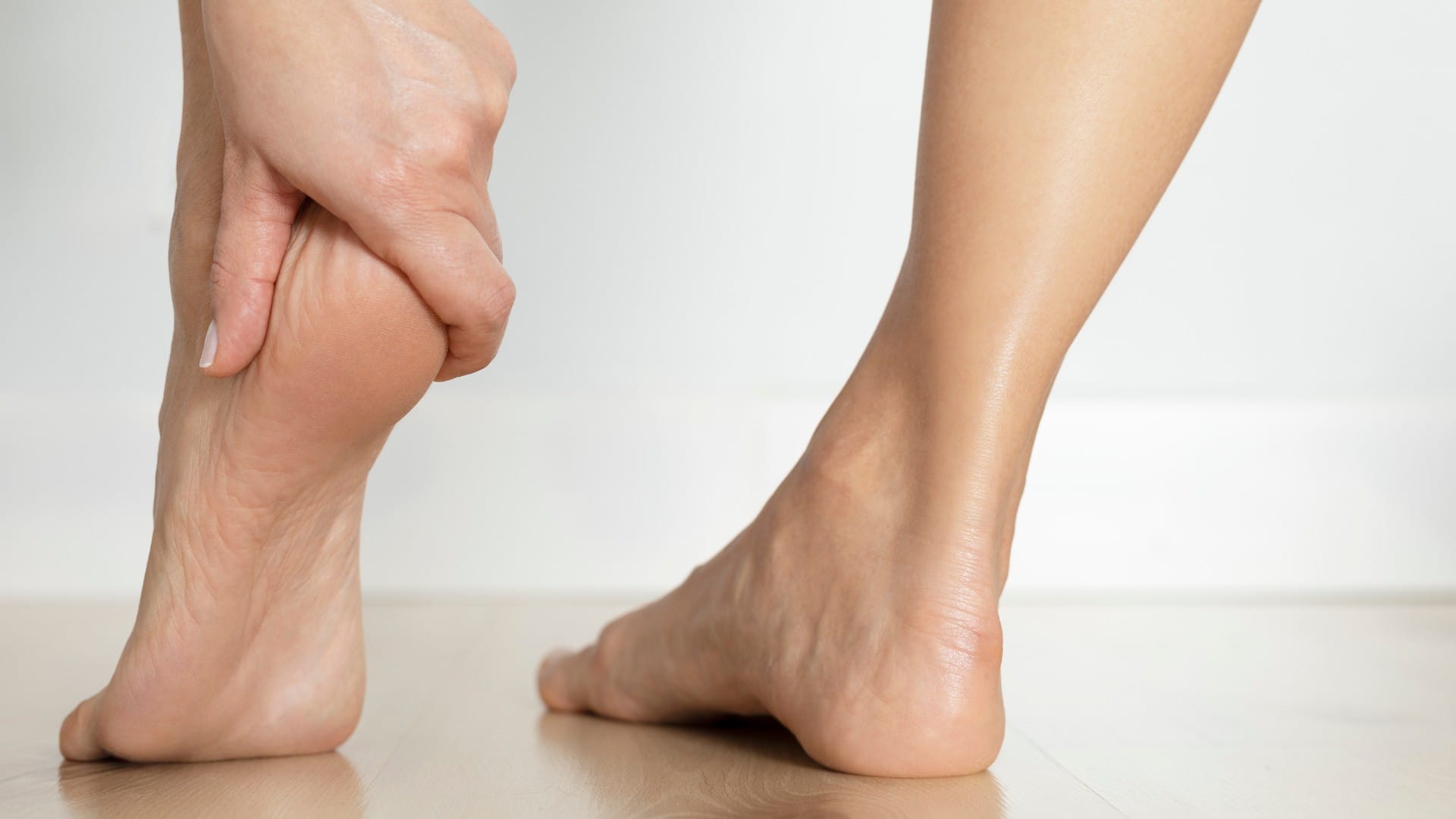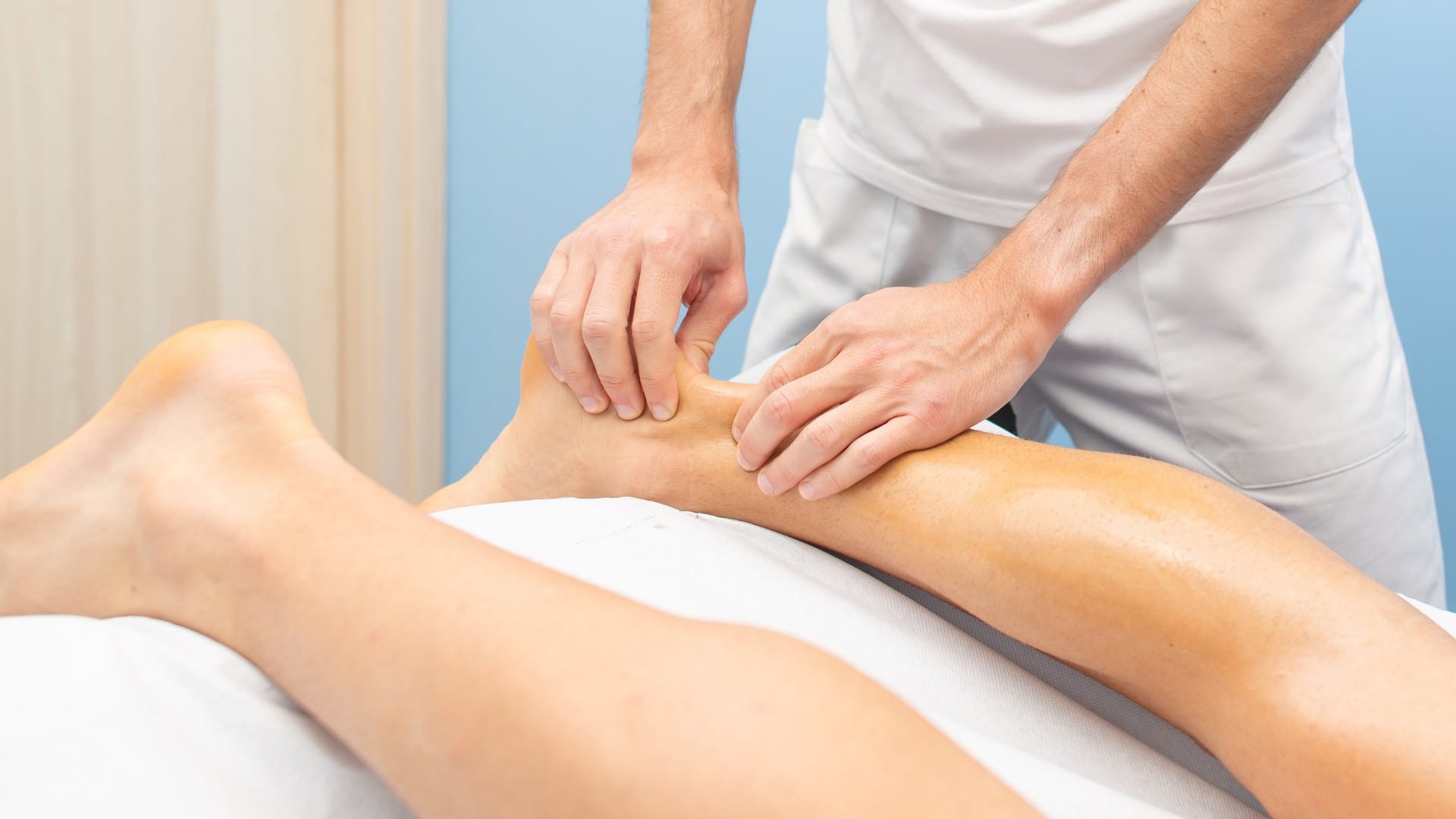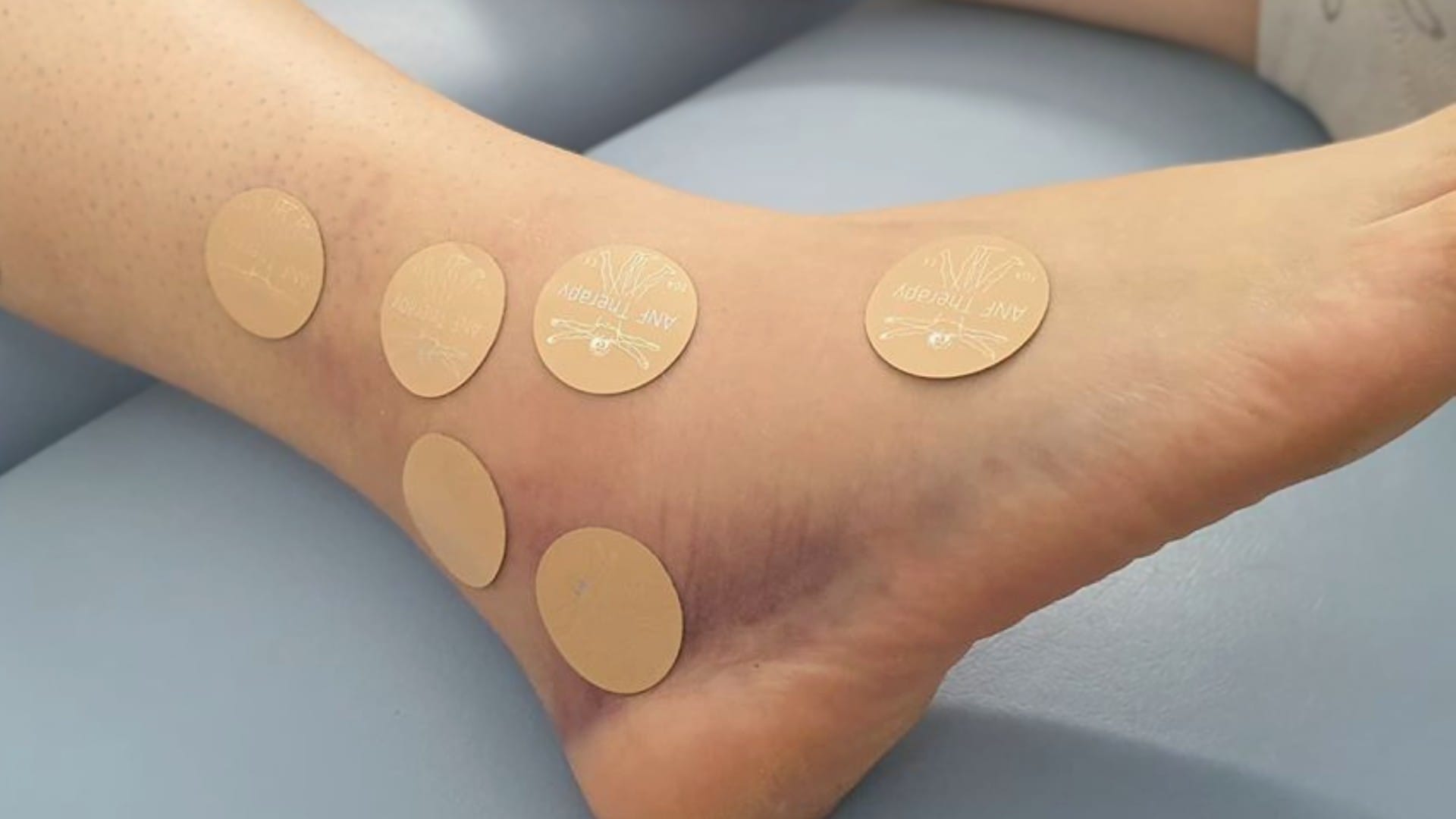
Table of Contents
Are you experiencing heel pain that is interfering with your movement? If so, there might be two causes: either you’re dealing with Achilles tendinitis or bursitis. Both these conditions are common in athletes, runners, and people with active lifestyles. But how do you know which one you have? Let’s take a closer look at this blog.
ANF Therapy®️ is an advanced frequency therapy that uses frequencies to heal different pathologies from their root cause. It uses frequency-charged ANF Devices that emit certain frequencies when applied to the body. These frequencies are designed to activate the body’s natural healing process.
What is Achilles Tendinitis?
Achilles tendinitis occurs due to swelling or inflammation in a fibrous band connecting your calf muscles to your heel bone (calcaneus), called the Achilles tendon. This is the strongest and largest tendon that supports walking, running, and jumping.
According to research, about 24% of athletes will have an Achilles tendon injury at some point.
What is Bursitis?
Bursitis occurs due to the inflammation of a fluid-filled sac called the bursa. This sac cushions joints and reduces friction between bones, tendons, and muscles.
Retrocalcaneal bursitis is the most common form of bursitis, which affects the bursa located between the Achilles tendon and the heel bone.
Every year, at least 1 in 10,000 people develop bursitis in their knees or elbows, with about one-third of these cases caused by a bacterial infection.

Achilles Tendinitis vs. Bursitis: Key Differences
So, how can you tell the difference between Achilles tendonitis and bursitis? Here are some factors:
Pathophysiology
Achilles tendonitis mainly occurs due to overuse or repetitive stress on the Achilles tendon, which results in inflammation. Over time, chronic stress leads to the degeneration of collagen fibres, abnormal blood vessel growth, and fatty infiltration (fat build-up). As a result, the tendon weakens, leading to pain, swelling, and limited movement. Athletes are usually at higher risk of developing Achilles tendonitis due to excessive strain on the tendon.
In contrast, bursitis occurs due to inflammation and swelling of a bursa, the fluid-filled sac that cushions bones, tendons, and muscles. Normally, the bursa stays flat, but when irritated by pressure, injury, or overuse, it fills with fluid and becomes swollen. This swelling causes pain, especially when pressed against surrounding tissues.
However, not all bursitis cases involve severe inflammation. Research shows that some inflamed bursae contain inflammatory chemicals like tumour necrosis factor alpha and interleukins, contributing to pain and swelling.
Symptoms
According to the American Academy of Orthopaedic Surgeons, common symptoms of Achilles tendon are:
- Pain at the back of the heel and along the Achilles tendon
- Stiffness, especially in the morning or after rest
- Increased pain with activity
- Tenderness to the touch
- Formation of bone spurs
- Swelling that worsens with movement
On the other hand, signs of bursitis include:
- Pain at the back of the heel, often near the heel bone
- Warmth and redness in the affected area
- Swelling
- Tenderness to the touch
- Pain that worsens with pressure or movement
Location of pain
Achilles tendonitis causes pain along the Achilles tendon, usually above the heel. In contrast, bursitis affects the bursa near the heel bone, which causes pain in a slightly different area.
Onset of Pain
Achilles tendonitis pain develops gradually over time and worsens with continuous activity. On the other hand, bursitis may occur suddenly due to trauma or slowly because of conditions like arthritis.

Causes of Achilles tendonitis
Several factors can contribute to the development of Achilles tendonitis, including:
- Overuse or repetitive stress (common in runners and athletes)
- Tight calf muscles that put excessive strain on the tendon
- Improper footwear that doesn’t provide adequate support
- Sudden increases in exercise intensity
- Poor running form or excessive uphill running
Conversely, bursitis is caused by:
- Overuse or repetitive motion (common in runners and dancers)
- Direct trauma or pressure on the heel
- Wearing tight or poorly fitting shoes
- Prolonged kneeling or excessive pressure on the heel
Risk factors
Some of the common risk factors of Achilles tendonitis include:
- Age, especially after 30
- Sex (more common in men)
- Physical activity
- Obesity
- Diabetes and metabolic diseases – A study found that 26.7% of type 2 diabetes patients showed signs of Achilles tendon abnormalities, compared to 2.5% of control
- Certain medications like fluoroquinolone antibiotics
- Family history of tendinopathy
- Reduced blood flow response after running
On the other hand, factors that may increase the risk of developing bursitis include:
- Occupational and sports-related activities that put pressure on the bursa
- Age as the risk increases with ageing
- Gender differences
- Medical conditions like rheumatoid arthritis and gout
- Overweight
- Foot anatomy. A flat surface of calcaneal tuberosity increases the risk of retrocalcaneal bursitis by 4.3 times
- Calcaneus slope – angle above 25° increases risk
- Achilles tendon thickness – Thicker tendon associated with higher risk
How to Treat Achilles Tendinitis and Bursitis?
ANF Therapy®️ is the latest and most advanced approach to managing Achilles tendonitis and bursitis. This noninvasive therapy focuses on restoring the body’s natural healing ability by applying specially designed ANF Devices to key areas. These devices emit unique frequencies that aim to support neurological functions, reduce inflammation, and promote tissue repair. ANF Therapy®️ helps identify and correct imbalances in the body’s electrical and biochemical systems, aiming to address the root cause of pain and dysfunction rather than just symptoms.
The Treatment Process
1. Comprehensive History
Your ANF Therapist will take a detailed history and evaluate the severity of pain, movement restrictions, and any previous treatments.
2. Physical Examination
Your ANF Therapist will perform a thorough neurological and musculoskeletal assessment to help pinpoint the affected structures, including thickening of tendons, swelling, muscle imbalances, and compensatory movement patterns.

3. Application of ANF Devices
After identifying the affected areas, your ANF Therapist will apply a combination of different devices, such as anti-inflammatory devices, nitric oxide devices (to improve blood flow), and antioxidant devices. These devices are designed to:
- Reduce pain and inflammation in the Achilles tendon and bursa
- Support tissue regeneration and enhance cellular repair
- Improve circulation to accelerate healing and reduce stiffness
Staying hydrated is essential during treatment, and at least 1-2 glasses of water per hour is recommended to aid detoxification for optimal results.
4. Expected Outcome
According to Dr. Mikel H-G Hoff, founder of ANF Therapy®️, most patients experience a noticeable reduction in pain and inflammation within the first session, with improvements continuing over time. However, recovery duration varies based on injury severity, lifestyle, and adherence to treatment protocols.
5. Follow-Up and Treatment Duration
Your ANF Therapist will schedule regular follow-ups to monitor progress, adjust treatment plans, and ensure the best outcomes. You will need to change ANF Devices every 72 hours. Achilles tendonitis and bursitis recovery may take weeks to months, depending on the severity of the condition.
Start Your Recovery with ANF Therapy®️
ANF Therapy®️ offers an innovative approach to treating Achilles tendonitis and bursitis. If you’re struggling with persistent pain, consult an ANF Practitioner or find an ANF Therapist atwww.anftherapy.com/find-clinic to begin your treatment today!
Are you a healthcare practitioner? Enhance your clinical skills with frequency medicine by learning more about ANF Therapy®️ and the ANF Clinical Education Program at www.anfacademy.com.
About ANF Therapy®️
ANF Therapy®️ uses circular ANF Devices, which are applied directly on the skin after palpation and assessment by a trained ANF Therapist following the ANF Therapy®️ Method, Patented Model no. U202030252, ES1259974.
The ANF Therapy®️ purpose is the alleviation of injury and pain within minutes.
Our aim is that the patient experiences a reduction of pain and swelling, an increase in range of motion, and an improvement in quality of life related to health. Non-transdermal, non-invasive device, NO needles or chemicals are used.
Do you need help with your health issues? Have you been experiencing symptoms of achilles tendinitis or bursitis?
Contact us, and we will explain how we can help you!


